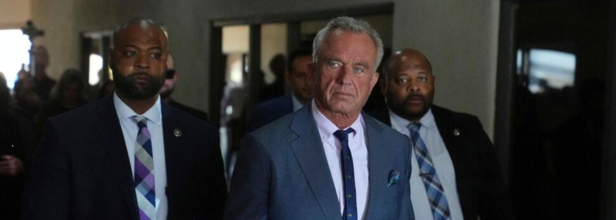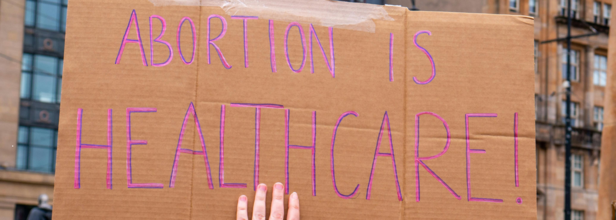
RFK Jr. Says New HHS Research Could Solve ‘Autism Epidemic’ By September- Could This Change Treatment?
Stirring another debate across the global medical and scientific communities, U.S. Health and Human Services Secretary Robert F. Kennedy Jr. has announced an ambitious plan to pinpoint the root cause of what he calls the nation’s “autism epidemic” by September. Framing it as a top priority of the Trump administration’s “Make America Healthy Again” initiative, Kennedy says a massive international research effort is now underway, involving “hundreds of scientists from around the world.”
But could this initiative truly revolutionize autism treatment and prevention—or is it based on scientifically shaky ground?
Speaking at a cabinet meeting alongside President Donald Trump, Kennedy claimed that the HHS-led research campaign would “determine what has caused the autism epidemic” and ultimately “eliminate those exposures.”
According to the CDC, autism spectrum disorder (ASD) now affects about 1 in 36 children in the U.S.—a sharp increase from 1 in 150 in the year 2000. Kennedy suggested the current figure may already be closer to 1 in 31.
President Trump, echoing Kennedy’s concerns, remarked, “There’s got to be something artificial,” suggesting the answer may lie in a product we consume or an injection we receive. The implication is clear: Kennedy's administration may be eyeing food, environmental factors—or even vaccines—as potential contributors.
This isn’t the first time Kennedy has drawn attention for his views on vaccines. In a now-retracted 2005 article, he implied a link between childhood vaccines and autism—claims that have been debunked repeatedly by leading health organizations, including the CDC and WHO.
While Kennedy insists he is “pro-safety” rather than anti-vaccine, he has declined to definitively rule out a vaccine-autism link, instead insisting that “good science” must lead the way. During his Senate confirmation hearings, he refused to unequivocally declare that vaccines like those for measles or hepatitis B do not cause autism—unless “the data was there.”
That hesitation continues to fuel concerns within the scientific community, especially as Kennedy now investigates the CDC’s childhood vaccine schedule and seeks access to sensitive vaccine safety data from federal systems like VAERS (Vaccine Adverse Event Reporting System).
The prevailing medical consensus remains firm: vaccines do not cause autism.
Multiple large-scale studies have failed to find a causal connection between autism and vaccinations, including those that contain thimerosal, a mercury-based preservative once cited by skeptics. The National Institute of Environmental Health Sciences (NIEHS), part of the NIH, maintains that no credible scientific link exists.
Instead, researchers point to a more complex interplay of genetic and environmental factors in autism’s etiology. These may include advanced parental age, prenatal exposure to air pollution or pesticides, and genetic mutations that influence brain development. Moreover, improved diagnostic criteria, earlier screening, and heightened awareness have contributed to increased detection.
Kennedy’s timeline—promising conclusive results by September—has drawn sharp criticism from autism advocacy organizations, scientists, and disability rights groups.
The Autistic Self Advocacy Network (ASAN) dismissed the plan as fundamentally flawed. “Real science does not move that quickly,” the group said in a statement. “Kennedy’s conviction that he has already found the answer demonstrates his disregard for the scientific method.”
Zoe Gross, director of advocacy at ASAN, added that Kennedy’s emphasis on “eliminating exposures” reveals a troubling bias toward predetermined outcomes. “It really is giving the game away,” she said.
Meanwhile, the Autism Society of America warned against misleading claims. “We need more rigorous, science-based research—not speculation, less transparency, or oversimplified timelines,” they said, citing concerns about who is leading the effort and what methodology is being applied.
The internal shakeup at the FDA offers further insight into the growing tensions between Kennedy’s office and established regulatory authorities. Dr. Peter Marks, former director of the FDA’s Center for Biologics Evaluation and Research, resigned after reportedly resisting pressure from Kennedy’s team to grant full access to VAERS. Marks feared that data could be manipulated, according to interviews with the Associated Press.
Despite these tensions, the National Institutes of Health (NIH) confirmed that it is cooperating with HHS to investigate autism's causes, citing a “national imperative” to uncover the truth behind rising ASD rates. However, the NIH also emphasized that it remains committed to using only “gold-standard, evidence-based science.”
Could This Affect Autism Treatment?
In theory, identifying environmental or lifestyle triggers for autism could open new frontiers for early intervention and prevention. If Kennedy’s research initiative reveals any previously unknown risks—validated by independent peer-reviewed studies—it could potentially shape future policies, healthcare guidance, and even parental decision-making during pregnancy and early childhood.
However, that optimistic scenario hinges on the research being conducted with full transparency, rigorous peer review, and alignment with established scientific standards—none of which, critics argue, are currently in place.
RFK Jr.’s bold promise to crack the code of autism by September is attention-grabbing, but it comes with a long shadow of controversy. With rising autism rates, families are desperate for answers. But as science has shown time and again, real answers take time—and cutting corners in the pursuit of truth often leads to misinformation, misplaced blame, and deeper public mistrust.

At 78, Trump Claims To Have Aced Cognitive Test With ‘Every Question Right’- Here’s What The Test Involves
In a country where the vitality of the president tends to serve as a proxy-in for credibility as a leader, President Donald J. Trump — now in his second term and the oldest president to hold office in U.S. history — is again making cognitive health the focal point of the nation's dialogue. Speaking on board Air Force One headed to West Palm Beach, the 78-year-old commander-in-chief made a public proclamation that he had "got every answer right" on a cognitive test administered during his annual check-up at Walter Reed Medical Center. "Good heart. Good soul. I felt I was in very good shape," said Trump, continuing that he went out of his way to take the test as a way of distinguishing himself from political rivals.
But what is this mental test actually — and what does it really tell us about a sitting president's mental acuity, particularly in the tough and high-wire job of Commander-in-Chief?
The president addressed openly to journalists on board during the trip to his home in West Palm Beach, Florida, assertively declaring, "I got every answer right." This comment has once again sparked public curiosity regarding the nature and importance of cognitive testing, particularly among aging political figures.
"I’m in very good shape — good heart, good soul, very good soul," President Trump told the White House press pool, emphasizing his physical and mental wellness. Not only did he point out the good results of his physical, but he also used the opportunity to differentiate himself from his political peers by mentioning that he took a cognitive test voluntarily — something he says his predecessors, former President Joe Biden and Vice President Kamala Harris, had declined to do.
This is not the first time President Trump has boasted about his cognitive abilities. In his last term, he made similar claims, even reciting memorable parts of the test like the now-famous phrase- "Man, Woman, Person, Camera, TV."
What Is the Cognitive Test Trump Took?
The test in question is the Montreal Cognitive Assessment (MoCA), a standardized screening tool developed in 1996 by neurologist Dr. Ziad Nasreddine. It’s widely used to detect mild cognitive impairment and early signs of Alzheimer's disease. Despite its simplicity for cognitively healthy individuals, the test is a powerful tool in neurological diagnostics.
MoCA tests several areas of brain function such as memory, attention, language, visuospatial abilities, and executive functions. It takes about 10 minutes and is commonly utilized by neurologists and primary care physicians to screen for cognitive impairments in persons aged 65 years and older.
President Trump claimed that he got every question correct — and for a cognitively healthy person, that is what is expected. But what is the MoCA, and are its last questions as hard as Trump claims?
1. Visuospatial and Executive Function Tasks
The test starts with a series of drawing exercises that involve:
- Drawing a clock indicating a particular time, e.g., 10 past 11.
- Copying a three-dimensional cube.
These exercises assess spatial knowledge, attention, and planning abilities — tasks that can decline with age or neurological deterioration.
2. Identification and Naming
These are illustrated animals — often a lion, camel, and rhinoceros — and participants are requested to identify them. This task appears straightforward but can be sensitive to problems with recall of language or semantic memory.
3. Delayed Recall and Memory
One of the more difficult sections of the test is when subjects are required to recall a series of five unrelated words. Later in the test, they are required to recall these same words without cues. This delayed recall section often uncovers early memory lapses.
4. Attention and Language Repetition
In the following section, items involve the repetition of strings of numbers forward and backward and simple subtraction items (e.g., subtract 7 from 100 consecutively). This assesses working memory and attention.
5. Verbal Fluency and Abstraction
Here, the subjects are required to say as many words as possible beginning with the letter "F" within 60 seconds. Subsequently, they have to describe similarities of two things — for example, how a train and a bicycle are similar (both are means of transport).
6. Orientation
The last section of the test tests an individual's sense of time and place — requesting that the subject give the present date, day of the week, month, year, and place.
How Difficult Is It, Really?
When asked about the difficulty of the test, Trump said, "I'll bet you couldn't even answer the last five questions. They get very hard." While certain sections, such as delayed recall and abstraction, may be challenging for people with early indicators of cognitive impairment, experts explain that the test is not intended to be excessively difficult for non-impaired individuals.
"The MoCA is not a test of intelligence," explains Dr. Sarah Williams, a Johns Hopkins Medicine neurologist. "It's intended to screen for very subtle indicators of cognitive decline. If you are cognitively normal, it will be very easy."
Cognitive Testing and Presidential Transparency
Trump's insistence on taking cognitive testing is less about boasting rights — it is also a sign of larger public anxieties surrounding aging leaders and their cognitive abilities. With both leading presidential candidates now over their late 70s and early 80s, mental sharpness issues have become an overarching theme in American politics.
Trump’s repeated willingness to undergo and publicize the results of cognitive testing could be interpreted as a strategic move to address those concerns head-on. “The American people want a mentally sharp president,” he said. “I think I’ve proven that.”

RFK Jr. tours the Native Health Mesa Food Distribution Center in Mesa, Ariz. (AP Photo/Ross D. Franklin)
What Happened to ‘Healthy Tribes’? RFK Jr.’s Visit Sparks Concern Amid Cuts To Native Health Program
During a recent visit to tribal communities in Arizona and New Mexico this week, US Health Secretary Robert F Kennedy Jr emphasized the importance of preventing chronic disease among the Native American and Alaska Native population. Is it targeting them? Because behind the scenes, a crucial health initiative that had long served those very communities is being dismantled. This will leave many tribal leaders alarmed and confused.
The initiative in question, Healthy Tribes, was part of the Centers for Disease Control and Prevention (CDC) and allocated $32.5 million annually to support culturally grounded programs focused on chronic disease prevention through traditional foods, medicine, and community engagement. As of early April, the program was also gutted due to workforce reductions at the CDC. Emails to tribal health organizations also confirmed that positions central to administering Healthy Tribes were in fact, being eliminated.
A Silent Rollback That Said A Lot
Kennedy’s public appearances, including a hike with the Navajo Nation president and a visit to a Native health center in Phoenix, made no mention of the program’s fate. He also moderated a panel at the Tribal Self-Governance Conference but avoided public questions. While he has said Native health is a top priority, his silence on the abrupt restructuring of Healthy Tribes has drawn criticism.
Tribal leaders now fear the rollback is part of a broader effort by the Trump administration to dismantle diversity, equity, and inclusion (DEI) initiatives. However, Native leaders have pushed back against being categorized as such, asserting that tribal support is a legal obligation under treaties and federal law—not a diversity measure.
'A Violation of Trust'
The federal government has a trust responsibility to tribal nations, which includes ensuring access to healthcare, education, and public safety. Leaders like W. Ron Allen of the Jamestown S’Klallam Tribe call the recent cuts “a violation of trust.” He said he reminded Kennedy during their private conversation that tribes are already underfunded and rely heavily on supplementary programs like Healthy Tribes.
One of the key concerns is the lack of tribal consultation—a legal requirement for federal actions affecting Native communities. Tribes were not consulted before the layoffs, echoing similar frustrations after mass terminations at the Indian Health Service earlier this year were temporarily rescinded following backlash.
What Is The Ground-Level Reality?
For tribal health facilities, these cuts have an immediate and grave implications.
For instance, in Seattle, Healthy Tribes funded GATHER. This was a program that blended traditional medicine with modern care. Plants from community gardens were also used in this treatment, and traditional healers worked alongside clinical staff. However, now, he communication with the grant administrators has been broken down.
In Los Angeles, Healthy Tribes funds youth-elder mentorship programs among Native and Alaska Native communities. The abrupt staffing changes have left administrators unclear about how or if these initiatives will at all continue.
Native leaders stress that their status is political, not racial, a key legal distinction. “We are not DEI,” said Gila River Indian Community Governor Stephen Roe Lewis, warning new federal officials against viewing tribes through a racial equity lens rather than honoring treaty-based obligations.
For now, tribal communities remain in limbo—concerned that Kennedy’s words on improving Native health aren’t matching federal actions that could ultimately set them back.

Credits: Canva
Amid Changing Health Laws In The US, Would Abortion Become Illegal?
Kristan Hawkins, who is the head of the national anti-abortion group Students For Life, is used to protests from abortion rights supporters during her college campus tours. However, she is now also facing opposition that too from a surprising source — other anti-abortion activists.
These critics call themselves abortion abolitionists. They have started to show up at Hawkin's events. They also accuse her for being too soft, and calling her a "baby killer". They are now demanding harsher penalties for women who get abortions. Due to the rising tensions, Hawkins has had to increase security and even send alerts to donors to help cover costs. As the Associated Press reports, she now also knows the price of a bomb dog.
Why Abortionists Want Criminal Charges For Women?
Abortion abolitionists believe abortion is murder—and should be treated that way under the law. Unlike mainstream anti-abortion groups, which typically target abortion providers, abolitionists want women who get abortions to be prosecuted, even sentenced to death in some cases. They’ve gained momentum since Roe v. Wade was overturned in 2022 and Republicans took full political control last year.
As of in 2025, lawmakers in 12 states, including Alabama, Georgia, Texas and Oklahoma have introduced bills that would allow prosecutors to charge women with homicide for abortions. Though most of these bills have not been passed, the fact that they are being considered shows the influence of abolitionists on abortion rights and health laws in general.
The Division Between The Anti Abortion Movement
Mainstream anti-abortion groups have tried to play down the divisions, focusing on shared goals like defunding Planned Parenthood. But many leaders are growing alarmed at the aggressive tactics and rhetoric coming from abortion abolitionists.
Hawkins herself posted on X in February that she’s more afraid of being attacked by fellow anti-abortion activists than by abortion rights supporters. The backlash was swift: She was called a “demon” and “enemy of God,” and some demanded she resign. Some even said women like her shouldn’t be leading anti-abortion groups at all.
Christian nationalist influencers have also amplified these voices. One podcaster blamed feminism for abortion, saying Christian men should lead the fight.
Experts like Laura Hermer, a law professor in Minnesota, say the fall of Roe has emboldened the most extreme voices. And they’re starting to shape policy.
What All Abortion Bills The US Has Seen?
- In Alabama, lawmakers have proposed a bill recently that could classify abortion as murder.
- In Georgia, a bill with nearly two dozen Republican co-sponsors would make abortion from the moment of fertilization a homicide.
- Similar bills have also been introduced in Kentucky, Missouri, and other states.
A 2022 KFF poll showed that around 80% of Americans oppose laws that would punish women for having abortions. However, Dana Sussman from Pregnancy Justice tells a media outlet that the number of such bills is rising sharply. What once sparked outrage is now becoming normalized.
Some lawmakers and advocates within the anti-abortion movement are pushing back. In North Dakota, a bill to prosecute women failed after major anti-abortion groups voiced opposition. In Oklahoma, a similar bill also died—but its co-sponsor, Sen. Dusty Deevers, said he plans to keep pushing for it, calling it “progress.”
Hawkins said the movement is now split into three groups:
- Those who want to prosecute women,
- Those who firmly oppose it,
- And those who don’t support it now but think that might change in the future.
She places herself in the third category, saying the focus should be on shifting culture and law gradually—not punishing women. “If you want more pro-abortion Democrats to win elections, then keep talking about putting women in jail,” she warned.
© 2024 Bennett, Coleman & Company Limited

